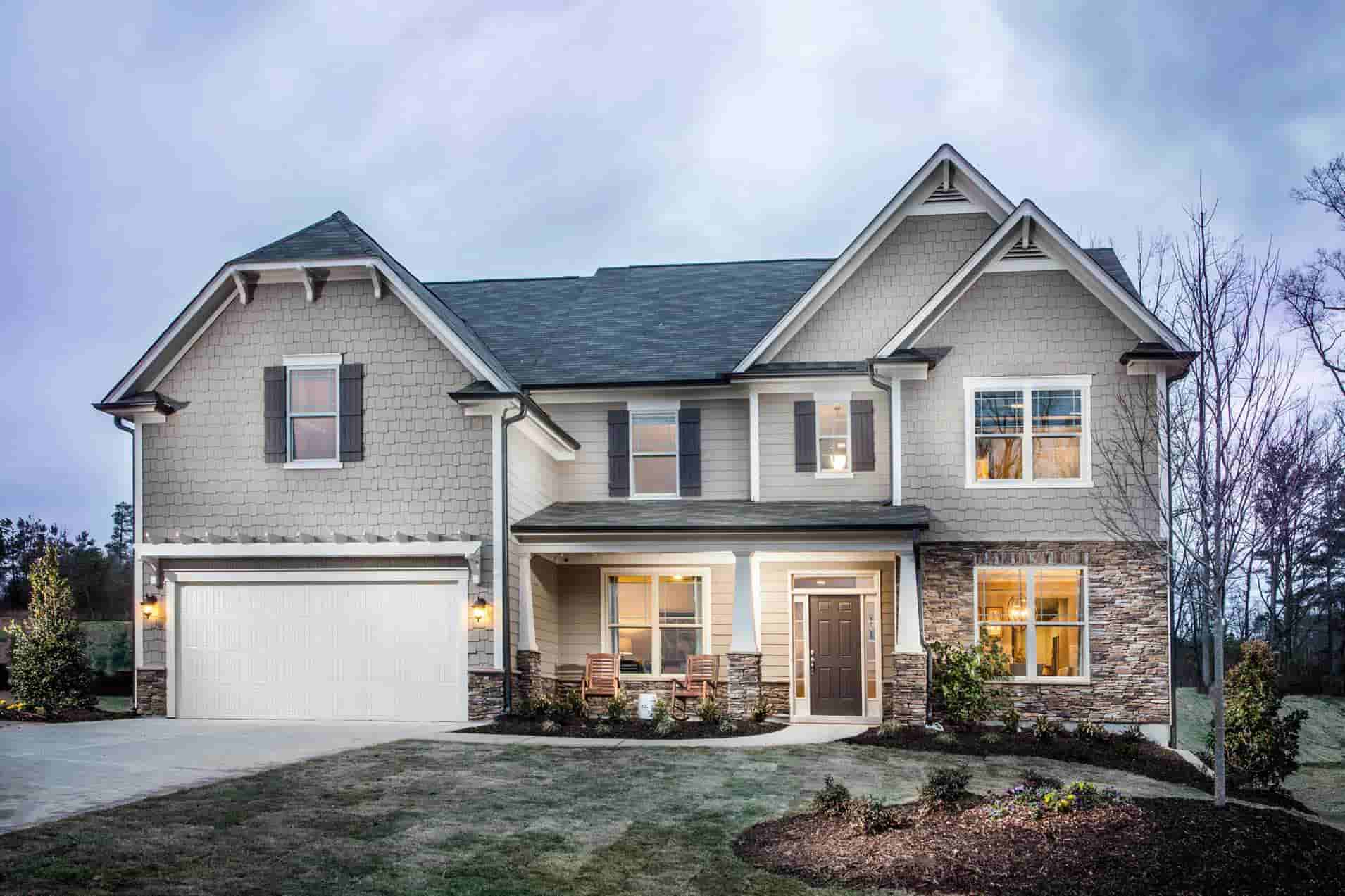The Ultimate Guide to Ember-Resistant Homes: Defending Against Wildfires
I'll never forget the orange glow on the horizon that night. We watched, helpless, as the wind whipped embers across the valley, landing like malevolent fireflies on anything dry. It was a stark reminder that wildfire isn't just a forest problem; it's a community problem, a home problem. The houses that survived weren't lucky; they were prepared. That experience ignited my passion for wildfire defense and specifically, how to protect our homes from the insidious threat of ember attack.
Understanding the Ember Threat and Ignition Zones
The primary cause of home ignition during a wildfire isn't typically direct flame contact; it's the ember attack. Embers, which are burning pieces of vegetation and debris, can travel significant distances – sometimes miles – ahead of the main fire front. These embers can accumulate in vulnerable areas around your home, known as ignition zones, and ignite combustible materials, leading to structural fires. A 2024 study by the Insurance Institute for Business & Home Safety (IBHS) found that embers were responsible for up to 90% of home ignitions during wildfires. Identifying and mitigating these ignition zones is the first crucial step in creating an ember-resistant home. This includes everything from your roof to your landscaping.
Roof Ember Protection: A Critical Defense
Your roof is arguably the most vulnerable part of your home to ember attack. Its large surface area makes it a prime target for landing embers, and if your roof isn't properly protected, it can quickly ignite. Choosing the right roofing material is paramount. Class A fire-rated roofing materials, such as asphalt shingles, metal, or tile, offer the best protection. However, even with a fire-resistant roof, embers can still find their way into vulnerable areas. Regular maintenance and proactive measures are essential.
Maintaining a Fire-Resistant Roof
- Regularly clear your roof of leaves, pine needles, and other debris. A leaf blower or broom works well for this.
- Inspect your roof for any damaged or missing shingles or tiles and repair them promptly.
- Ensure that your gutters are clean and free of debris. Clogged gutters can trap embers and provide fuel for a fire.
Choosing the Right Roofing Materials
When replacing your roof, opt for Class A fire-rated materials. Here's a breakdown of common options:
| Roofing Material | Fire Resistance | Pros | Cons |
|---|---|---|---|
| Asphalt Shingles (Class A rated) | Excellent | Relatively inexpensive, widely available, easy to install | Can degrade over time, less durable than some other options |
| Metal Roofing | Excellent | Very durable, long lifespan, reflects heat | Can be more expensive than asphalt shingles, can be noisy during rain |
| Tile Roofing (Clay or Concrete) | Excellent | Very durable, long lifespan, aesthetically pleasing | Expensive, heavy, requires professional installation |
Siding Ember Resistance and Wall Protection
Your home's siding is another critical area to address when creating an ember-resistant home. Just like your roof, your siding can be ignited by embers that land on its surface or accumulate in gaps and crevices. The material you choose for your siding plays a significant role in its resistance to ember attack. Non-combustible or fire-resistant materials are the best options. Maintaining existing siding is also crucial to preventing ignition.
Fire-resistant materials such as fiber cement siding, stucco, brick, or metal siding are highly recommended. These materials are significantly less likely to ignite than wood or vinyl siding. When installing new siding, ensure that it is properly sealed to prevent embers from entering gaps and crevices. For existing wood or vinyl siding, consider applying a fire-retardant coating. These coatings can help to slow down the spread of fire and give you more time to evacuate.
Ventilation Screening: Preventing Ember Intrusion
Vents, including attic vents, foundation vents, and soffit vents, are essential for proper ventilation, but they also provide potential entry points for embers. Embers can easily enter these vents and ignite combustible materials inside your home. Installing proper ventilation screening is a critical step in preventing ember attack.
Use metal mesh screening with openings no larger than 1/8 inch to cover all vents. This mesh will effectively block embers while still allowing for adequate airflow. Ensure that the screening is securely attached to the vent and that there are no gaps or tears. Regularly inspect the screening for any damage and repair it promptly. In addition to screening, consider using specialized vent covers designed to automatically close in the event of a fire. These covers can provide an extra layer of protection against ember attack.
Creating Defensible Space: A Buffer Zone Around Your Home
Defensible space is the area around your home that is cleared of vegetation and other combustible materials. This zone acts as a buffer between your home and any approaching wildfires, reducing the likelihood of ember attack and direct flame contact. Creating and maintaining adequate defensible space is one of the most effective ways to protect your home from wildfire. The size of the defensible space will depend on the slope of your property and the type of vegetation in the area. In general, a minimum of 30 feet of defensible space is recommended around your home. However, in areas with steep slopes or dense vegetation, a larger defensible space may be necessary.
Regularly remove dead leaves, pine needles, and other debris from your yard. Prune trees and shrubs to keep them away from your home and to remove any dead or dying branches. Mow your lawn regularly and keep it short. Replace flammable mulch with non-combustible alternatives, such as gravel or rock. Store firewood away from your home and other structures. By creating and maintaining adequate defensible space, you can significantly reduce the risk of your home igniting during a wildfire.
Defensible Space Zones
- Zone 1 (30 feet from the home): This is the most critical zone. Keep it lean, clean, and green. Remove all dead vegetation and debris. Prune trees and shrubs to create vertical and horizontal spacing. Use non-combustible mulch.
- Zone 2 (30-100 feet from the home): Reduce the density of vegetation. Remove ladder fuels (vegetation that can carry a fire from the ground to the treetops). Create horizontal spacing between trees and shrubs.
Other Important Considerations for Home Hardening
- Windows and Doors: Install dual-pane windows and doors with tight-fitting frames. Consider fire-resistant shutters for added protection.
- Decks and Porches: Use fire-resistant materials for decks and porches. Clear debris from underneath decks and porches regularly.
- Fences: Use fire-resistant materials for fences, especially those close to your home.
- Gutters: Keep gutters clean and free of debris. Consider installing gutter guards to prevent debris from accumulating.
- Address Numbers: Ensure that your address numbers are clearly visible from the street, so firefighters can easily find your home.
Troubleshooting & Pro Tips
Sometimes, even with the best preparations, challenges can arise. Here are a few common issues and how to address them:
- Problem: You live in a densely wooded area and cannot create the recommended defensible space. Solution: Focus on hardening your home as much as possible. Pay extra attention to your roof, siding, and vents. Consider installing a sprinkler system that can wet down your home during a wildfire.
- Problem: You have a limited budget for home hardening. Solution: Prioritize the most vulnerable areas, such as your roof and vents. Start with small, affordable improvements and gradually work your way up.
- Pro Tip: Maintain all equipment properly. A clogged gutter cleaning device or a broken ladder will not help during critical home defense.
- Pro Tip: Create a wildfire action plan with your family. Practice the plan regularly so everyone knows what to do in the event of a wildfire.
- Pro Tip: Stay informed about local wildfire risks and alerts. Sign up for emergency notifications and monitor local news and weather reports.
Key Takeaway: Home hardening is an ongoing process, not a one-time event. Regular maintenance and vigilance are essential to protecting your home from wildfire.
FAQ
- Q: How much does it cost to make my home ember-resistant? A: The cost varies depending on the size and condition of your home, as well as the materials you choose. However, even small improvements can make a big difference.
- Q: Can I get insurance discounts for making my home ember-resistant? A: Some insurance companies offer discounts for homeowners who take steps to protect their homes from wildfire. Check with your insurance provider to see if they offer any discounts.
- Q: Where can I find more information about wildfire prevention and home hardening? A: Numerous resources are available online and in your community. Check with your local fire department, state forestry agency, and organizations like the Insurance Institute for Business & Home Safety (IBHS).
- Q: What is the role of wildfire prevention in protecting my home? A: While home hardening focuses on making your property more resistant to fire, wildfire prevention aims to reduce the likelihood of wildfires starting in the first place. Supporting initiatives like controlled burns, forest thinning, and responsible recreation practices can contribute to overall community safety.
Protecting your home from wildfire is a responsibility we all share. By understanding the risks of ember attack and taking proactive steps to harden our homes and create defensible space, we can significantly reduce the likelihood of loss and create safer communities. Now, share your experiences! What challenges have you faced in making your home more ember-resistant, and what solutions have you found? Leave a comment below and let's learn from each other.


